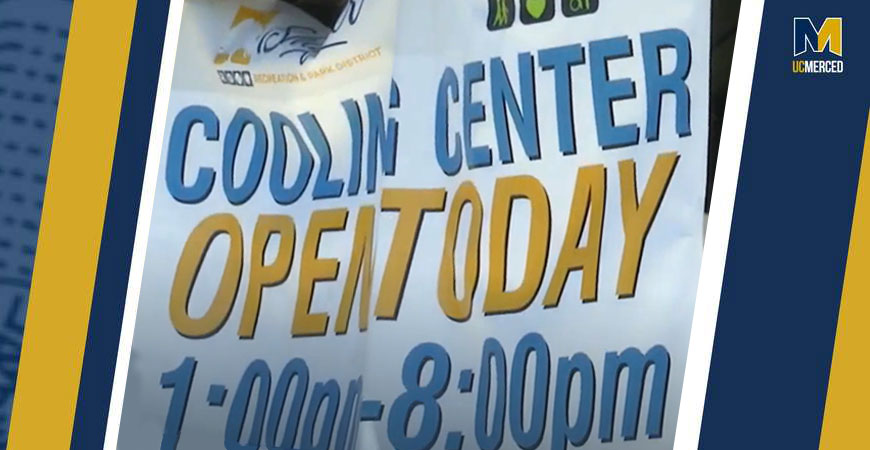
In California’s Kern County, nearly 925,000 people live in oppressive heat 125 days per year.
Several types of relief are offered. Residents can get breaks on energy bills bloated by air conditioning costs. Triple-digit temperatures trigger the opening of public buildings labeled “cooling centers.” Schools and businesses get tips about preventing heat-related illness.
But how effective are these protections? Kern County’s rate of heat-related hospitalizations from 2000 through 2020 was twice California’s average. Access to services are strained by a poverty rate nearly 50% higher than the state’s.
What more can be done?
A research project that partners UC Merced with Stanford University aims to find answers. The study will combine health data, interviews with affected residents and expertise from a community advisory board into an action plan to further understand the benefits of heat interventions and improve the quality of life for people in the San Joaquin Valley’s southernmost county.
Public health Professor Sandie Ha leads the project, which is funded by the California Air Resources Board and began April 1. Ha said the project looks beyond heat-related deaths and delves into how oppressive temperatures affect mental, respiratory and cardiovascular health, as well as pregnancies. It also will analyze the health benefit and, by extension, cost-effectiveness of heat interventions.
The Stanford team is taking the lead in working with the community advisory board and interviewing residents about heat interventions — how well they work and what barriers exist. Did residents hear about how they can reduce their power bills? Do they know an agency will pay to button up their homes with caulk and insulation? Are they able to catch a ride to cool off at the East Bakersfield Veterans Hall or the Arvin Community Center?
“Of course, we want to help the communities there. But we want them to help us as well. UC Merced is here in the Valley. We’re part of them.”
“All of these aspects, cumulatively, make the project more innovative than similar ones done before,” said Ha, a member of UC Merced Health Sciences Research Institute.
Ha has extensive experience with population-based studies on environmental impacts on health. In 2024, she and a team of researchers published a study on the effects of air pollution on residents from a concentration of commercial trucks in south Fresno. The study supported a proposal to shift truck routes away from residential areas.
But Ha’s current project is much bigger, at least geographically. Kern County is California’s third-largest county by area. Bakersfield is its anchor city, but some communities stretch into the Sierra Nevada and Coast Range, along with desert landscapes and broad swaths of farmland. More than half of the county’s population is Hispanic.
Dangerous heat is a relative thing. Cooling centers on the valley floor are supposed to open when a day’s forecasted high temperature hits 105 degrees. In the mountain town of Frazier Park, the trigger is 93. In the desert community of Rosamond, it’s 108.
No matter where a Kern County resident lives, exposure to hot days can break down a body’s defenses. According to a recent study, prolonged exposure to extreme heat accelerates aging in people 56 or older. In the study, subjects faced highs of 90 degrees at least 140 days a year. Kern County approaches that mark with an average of 128 such days from 2014 through 2023.
This far-reaching effect of hot weather on Kern County’s people is one huge reason why interviewing, surveying and empowering residents about methods of heat relief is a pivotal part of Ha’s project. Manali Patel, a professor of medicine at Stanford, will head the effort, which the researchers call “ground truthing.”
“Of course, we want to help the communities there. But we want them to help us as well,” Ha said. “UC Merced is here in the Valley. We’re part of them. Our mindset is to give them genuine care and work to make it bi-directional.”